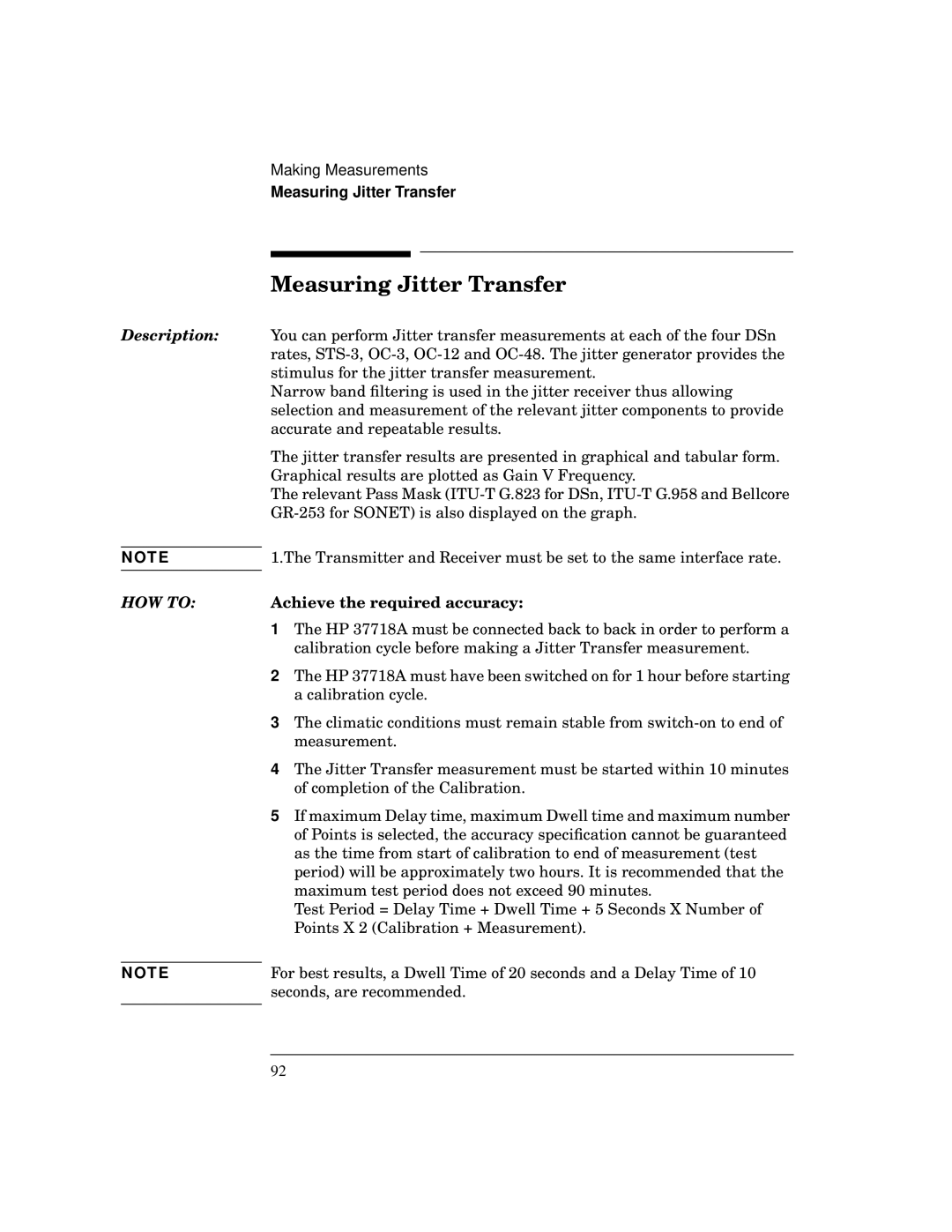
Description:
NOTE
HOW TO:
NOTE
Making Measurements
Measuring Jitter Transfer
Measuring Jitter Transfer
You can perform Jitter transfer measurements at each of the four DSn rates,
Narrow band filtering is used in the jitter receiver thus allowing selection and measurement of the relevant jitter components to provide accurate and repeatable results.
The jitter transfer results are presented in graphical and tabular form. Graphical results are plotted as Gain V Frequency.
The relevant Pass Mask
1.The Transmitter and Receiver must be set to the same interface rate.
Achieve the required accuracy:
1The HP 37718A must be connected back to back in order to perform a calibration cycle before making a Jitter Transfer measurement.
2The HP 37718A must have been switched on for 1 hour before starting a calibration cycle.
3The climatic conditions must remain stable from
4The Jitter Transfer measurement must be started within 10 minutes of completion of the Calibration.
5If maximum Delay time, maximum Dwell time and maximum number of Points is selected, the accuracy specification cannot be guaranteed as the time from start of calibration to end of measurement (test period) will be approximately two hours. It is recommended that the maximum test period does not exceed 90 minutes.
Test Period = Delay Time + Dwell Time + 5 Seconds X Number of Points X 2 (Calibration + Measurement).
For best results, a Dwell Time of 20 seconds and a Delay Time of 10 seconds, are recommended.
92
